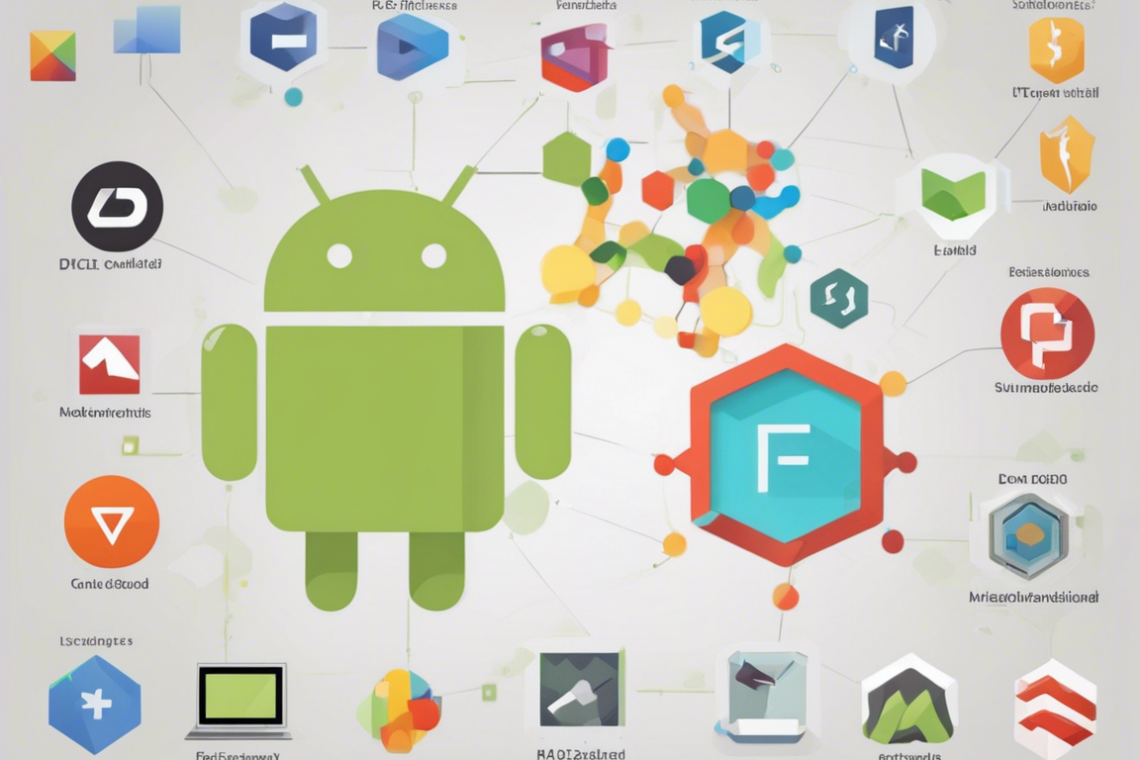Exploring Essential Android Frameworks
When it comes to building applications, Android developers rely heavily on a range of built-in frameworks that help streamline the development process, enhance functionality, and ensure a seamless user experience. Understanding these essential Android frameworks can be critical for developers looking to create high-quality apps efficiently. In this article, we will explore some of the key frameworks that every Android developer should be familiar with.
1. Android SDK (Software Development Kit)
At the core of Android development is the Android SDK, which provides developers with the tools and APIs necessary to build, test, and debug Android applications. The SDK includes essential components such as libraries, debugger, emulator, and documentation. It also offers support for various versions of Android, allowing developers to target a wide range of devices.
Key features of the Android SDK:
- Android Studio: The official IDE for Android development, offering a rich set of tools for coding, debugging, and testing.
- Android Debug Bridge (ADB): A versatile command-line tool that allows developers to communicate with an emulator or connected Android device.
- Android Virtual Device (AVD): An emulator that mimics the functionality of a physical Android device for testing purposes.
- Android APIs: A collection of APIs that enable developers to access device features such as camera, sensors, location, and more.
2. Android Jetpack
Android Jetpack is a set of libraries, tools, and guidance provided by Google to help developers build high-quality Android applications more efficiently. Jetpack components are designed to address common challenges faced by Android developers, such as lifecycle management, navigation, UI design, and more. By using Jetpack, developers can focus on writing code that adds value to their apps, rather than dealing with boilerplate code.
Key components of Android Jetpack:
- Lifecycle: Helps manage the lifecycle of Android components such as activities and fragments.
- ViewModel: Stores and manages UI-related data in a lifecycle-conscious way.
- LiveData: Data holder class that can be observed for changes.
- Room: Provides an abstraction layer over SQLite for database operations.
- Navigation: Simplifies the implementation of navigation in an app.
3. Retrofit
Retrofit is a type-safe HTTP client for Android and Java that simplifies the process of making network requests in an Android app. With Retrofit, developers can define an interface with API endpoints and annotations, making network calls concise and easy to understand. Retrofit also offers support for various serialization formats such as JSON and XML.
Key features of Retrofit:
- Declarative API: Define API endpoints as interface methods with annotations.
- Easy Error Handling: Supports error handling using callbacks or RxJava.
- Serialization: Built-in support for converting JSON to Java objects and vice versa.
- Request Customization: Allows customization of requests using interceptors.
- RxJava Integration: Seamless integration with RxJava for reactive programming.
4. Firebase
Firebase is a mobile and web application development platform acquired by Google that offers a wide range of services to developers, including authentication, real-time database, cloud messaging, analytics, and more. Firebase enables developers to build high-quality apps, grow their user base, and earn more revenue. It provides a comprehensive set of tools to address common app development challenges.
Key features of Firebase:
- Authentication: Securely authenticate users using email/password, phone number, or third-party providers.
- Realtime Database: Store and sync data in real time across all clients.
- Cloud Messaging: Send notifications and messages to users across platforms.
- Analytics: Gain insights into app usage and user engagement.
- Crashlytics: Monitor app stability and receive real-time crash reports.
5. Dagger 2
Dagger 2 is a dependency injection framework for Android and Java that helps manage the dependencies of an application. Dependency injection is a design pattern that allows developers to write loosely coupled code, making their apps easier to maintain and test. Dagger 2 generates boilerplate code for dependency injection at compile time, ensuring efficient and optimized app performance.
Key features of Dagger 2:
- Compile-time Dependency Injection: Generates efficient and easy-to-understand dependency injection code.
- Scalable: Supports complex dependency graphs and multiple scopes.
- Modularization: Facilitates modular app development by separating concerns.
- Performance: Improves app performance by reducing runtime overhead.
- Testing: Simplifies testing by enabling easy dependency mocking.
6. Glide
Glide is a fast and efficient image loading library for Android that simplifies the process of loading images from various sources such as network, local storage, or resources. Glide provides advanced features for image caching, transformation, and animation, helping developers deliver a smooth and responsive user experience when working with images in their apps.
Key features of Glide:
- Image Caching: Provides memory and disk caching for efficient image loading.
- Transformation: Supports image transformations like resizing, cropping, and applying filters.
- Animated GIF Support: Handles animated GIF images seamlessly.
- Placeholder and Error Images: Allows setting placeholder and error images for better user experience.
- Integration: Integrates easily with RecyclerView, ListView, and other UI components.
7. RxJava
RxJava is a popular reactive programming library for building asynchronous, event-based applications in Android. It provides a powerful and composable API for working with asynchronous data streams, enabling developers to write reactive code that is concise, readable, and efficient. RxJava is particularly useful for handling complex asynchronous operations, such as network requests or database queries.
Key features of RxJava:
- Observables and Observers: Represent data streams and subscribers that react to emitted data.
- Operators: Transform, filter, and combine data streams using a wide range of operators.
- Schedulers: Control the thread on which operations are performed, making it easy to work with multithreaded applications.
- Backpressure Support: Handles backpressure to prevent overwhelming the system with data.
- Error Handling: Provides robust error-handling mechanisms for reactive streams.
FAQs (Frequently Asked Questions)
1. What is the difference between Android SDK and Android Jetpack?
Android SDK is a comprehensive development kit that includes tools, libraries, and APIs for building Android applications, while Android Jetpack is a set of libraries and components that provide higher-level abstractions and tools to simplify Android app development. Android Jetpack is built on top of the Android SDK and offers components for common app development tasks.
2. How does Retrofit simplify network requests in Android apps?
Retrofit simplifies network requests in Android apps by allowing developers to define API endpoints as interface methods with annotations. This declarative API style makes network calls concise and easily understandable. Retrofit also supports serialization formats like JSON and XML, making it easy to convert data between API responses and Java objects.
3. What are some advantages of using Firebase for app development?
Firebase offers a range of services that can benefit app developers, including authentication, real-time database, cloud messaging, analytics, and crash reporting. By using Firebase, developers can easily integrate essential features into their apps without the need to build and maintain complex backend infrastructure, saving time and resources.
4. Why is dependency injection important in Android development?
Dependency injection is important in Android development because it helps manage the dependencies of an application and promotes loosely coupled code. Dependency injection makes it easier to maintain, test, and scale apps by decoupling components and providing better control over object creation and lifecycle management.
5. How does Glide improve image loading performance in Android apps?
Glide improves image loading performance in Android apps by providing efficient image caching mechanisms that reduce load times and network bandwidth usage. It also offers advanced features for image transformations, placeholder images, error handling, and seamless integration with UI components, ensuring a smooth and responsive user experience when working with images.
In conclusion, Android frameworks play a crucial role in simplifying and enhancing the development of Android applications. By leveraging these essential frameworks such as Android SDK, Android Jetpack, Retrofit, Firebase, Dagger 2, Glide, and RxJava, developers can streamline their workflow, build more robust apps, and deliver a superior user experience. Familiarizing oneself with these frameworks and incorporating them into app development projects can help developers stay ahead in the competitive world of Android development.








